Causes and Formation of Mold
Mold needs moisture to grow. If mold occurs in living spaces and spreads over a larger area, the remediation of the mold infestation can quickly lead to considerable costs. In order to be able to remove mold infestation sensibly and avoid it in the future, the causes must be clarified.
A common assumption is that living spaces start to go moldy when the residents don’t ventilate enough and don’t heat enough. Among other things, you will learn how to recognize mold through incorrect ventilation. In around 10% of cases, this is the only cause of mold in the home. In an estimated 60% of the cases, structural defects are responsible, in a good 30% the cause is a combination of structural defects and incorrect ventilation or the lack of a ventilation system. In modernized old and new buildings, there is a tendency for mold to develop more than in old buildings.
What are molds?
Molds form typical fungal threads and microscopic spores. They are part of the natural environment and can be found almost everywhere: in the ground, in the air, indoors and in nature. Since they are involved in the decomposition of organic material, they play an important role in the cycle of nature. The spores of mold can survive even under unfavorable conditions such as drought, months and years, but only multiply if there is sufficient moisture. Then the network of threads, the mycelium, which is typical of mushrooms, is formed.
Usually, indoor mold is harmless. However, if their concentration exceeds a certain level, damage to buildings and furnishings as well as health problems for the residents can occur. Mold not only develops on the wallpaper and in the plaster, it can also affect the masonry.
In order for mold to grow, it needs two basic conditions: nutrients and moisture. Other, but less important, factors are temperature and pH. Mold doesn’t need light or oxygen to grow.
Mold spores are undemanding and can spread with a very small supply of nutrients, which is already sufficiently available from simple house dust. As a result, mold in the house can also form on surfaces that seem unsuitable and do not contain any nutrients.
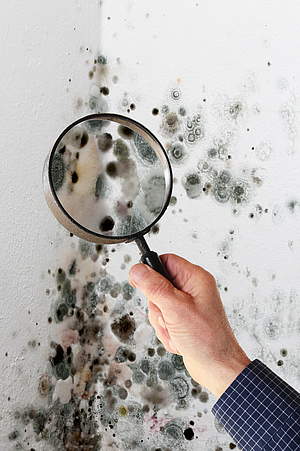
Accordingly, the most relevant factor in the formation of mold in living rooms or basements is moisture. It is not just the relative humidity of the room air that decides whether mold can spread, but the moisture content directly above the wall surface. How high this is depends not only on the humidity of the room air and its temperature, but also on the temperature of the wall. Most molds grow at 80 to 85% relative humidity. Under exceptional circumstances, however, mold can develop at 65% or up to almost 100% relative humidity. See also: How is humidity created?
The state-certified construction technician Mike Hahn works as a freelance expert for moisture and mold damage. According to his statement, the most common causes of mold or increased moisture in the apartment are "an unfavorable geographical location and floor plan, insufficient thermal insulation, incorrect material selection (wall structure, window), unfavorably placed radiators, construction defects, damage caused by accidents and incorrect user behavior (ventilation, heating, Furnish). Often several causes occur at the same time. "

Formation of mold at a glance:
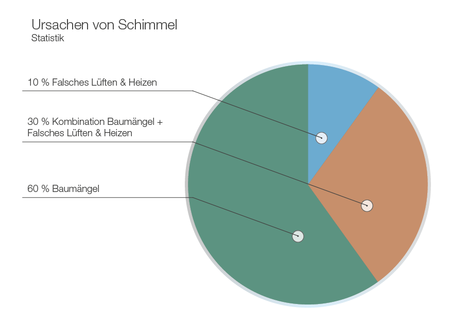
- Molds are undemanding and occur everywhere in nature and in buildings
- Mold can develop in living spaces if there are nutrients and sufficient moisture
- Direct moisture penetration can result from leaky roofs, cellars, pipes or accidents
- Direct moisture penetration can result from leaky roofs, cellars, pipes or accidents
- Structural factors favor mold growth, especially in combination with incorrect ventilation and heating behavior or the lack of a well thought-out ventilation system
- Thermal bridges, such as on windows or balcony doors, and inadequately insulated exterior walls encourage the formation of mold on walls
How does mold develop in the apartment?
Damit Schimmelpilze wachsen können, brauchen sie zwei Grundbedingungen: Nährstoffe und Feuchtigkeit. Weitere, aber weniger bedeutende, Faktoren sind die Temperatur und der pH-Wert. Schimmel braucht weder Licht noch Sauerstoff, um zu wachsen.
Schimmelsporen sind anspruchslos und können sich schon mit einer sehr geringen Nährstoffzufuhr ausbreiten, die bereits durch einfachen Hausstaub ausreichend vorhanden ist. Schimmelpilz im Haus kann sich somit auch auf Oberflächen bilden, die für uns Menschen ungeeignet erscheinen und keine Nährstoffe enthalten.
Der relevanteste Faktor bei der Schimmelbildung in Wohnräumen oder Kellern ist dementsprechend die Feuchtigkeit. Dabei entscheidet nicht allein die relative Luftfeuchte der Raumluft, ob sich Schimmel ausbreiten kann, sondern der Feuchtegehalt direkt über der Wandoberfläche. Wie hoch diese ist, hängt nicht nur von der Luftfeuchtigkeit der Raumluft und deren Temperatur ab, sondern auch von der Temperatur der Wand (Wie entsteht Luftfeuchtigkeit?). Die meisten Schimmelpilze wachsen bei 80 bis 85 % relativer Luftfeuchte. Unter Ausnahmebedingungen kann sich Schimmel aber auch bereits bei 65 % oder bis annähernd 100 % relativer Luftfeuchte entwickeln.
Causes of mold in the apartment and in the house
In living spaces, moisture is created, which leads to the formation of mold, usually through indirect moisture penetration by condensation water that precipitates on cold surfaces. Condensation occurs because warm air can absorb more moisture than cold air and the water vapor in the air liquefies when it cools below a certain temperature. Since the temperature differences between inside and outside or between indoor air and wall are greatest in the cold season, mold can occur more frequently, especially in winter.
In addition, direct moisture penetration, such as through leaky roofs, basements or cracks in facades or leaking pipes and accidents, is often the cause of moisture in the house. Depending on where the water damage is occurring and how severe it is, it can be easily located and eliminated. If it remains undetected for a long time, this can lead to mold in the house.
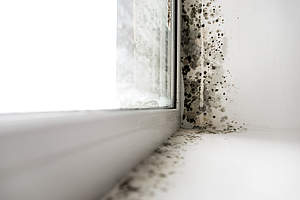
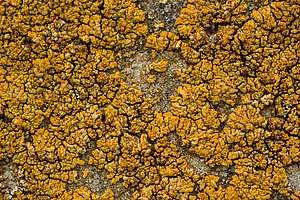
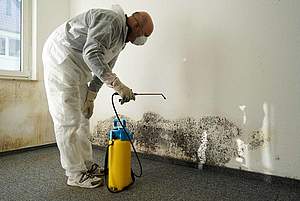
Whether or not so much moisture settles through indirect moisture that mold can develop depends not only on the ventilation and heating behavior, but also on the building materials used and the number and intensity of the moisture sources in the rooms. Structural factors that contribute to an airtight design of the building envelope and promote the formation of mold are, for example, the use of building materials with low diffusibility and low water vapor absorption capacity (e.g. concrete and polystyrene), waterproof facade paints, sealed windows, synthetic wallpaper and wall paints and cold or cold paints. Thermal bridges such as on windows or balcony doors.
In order to avoid the development of mold, it is advisable to use building materials that can absorb moisture and transport it to the outside. Natural building materials such as clay and lime have excellent diffusion properties in this regard. A well thought-out ventilation concept, for example with a decentralized ventilation system in the house, can ensure the correct ventilation of the rooms, even if the structural conditions favor the formation of mold. Further tips for avoiding mold can be found in the guide to preventing and avoiding mold.
Causes of mold in individual areas of the house
Mold in the house is more likely to occur in some rooms than in others. Reasons for this are structural conditions, temperature differences in the apartment and activities with different levels of water vapor generation (formation of air humidity). The following is a list of the different rooms and how you can identify mold caused by incorrect ventilation.
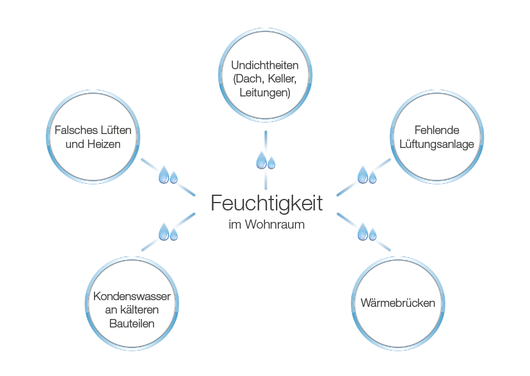
In the bathroom and kitchen in particular, a lot of moisture is generated from activities such as showering, washing or cooking and washing up. In particular, if the renovation or the construction of the building does not allow sufficient diffusion of the air humidity to the outside, insufficient ventilation can quickly increase the relative air humidity to the point where mold can develop.
Drying clothes in living rooms or large aquariums also leads to increased humidity, which, as in the bathroom and kitchen, promotes mold growth.
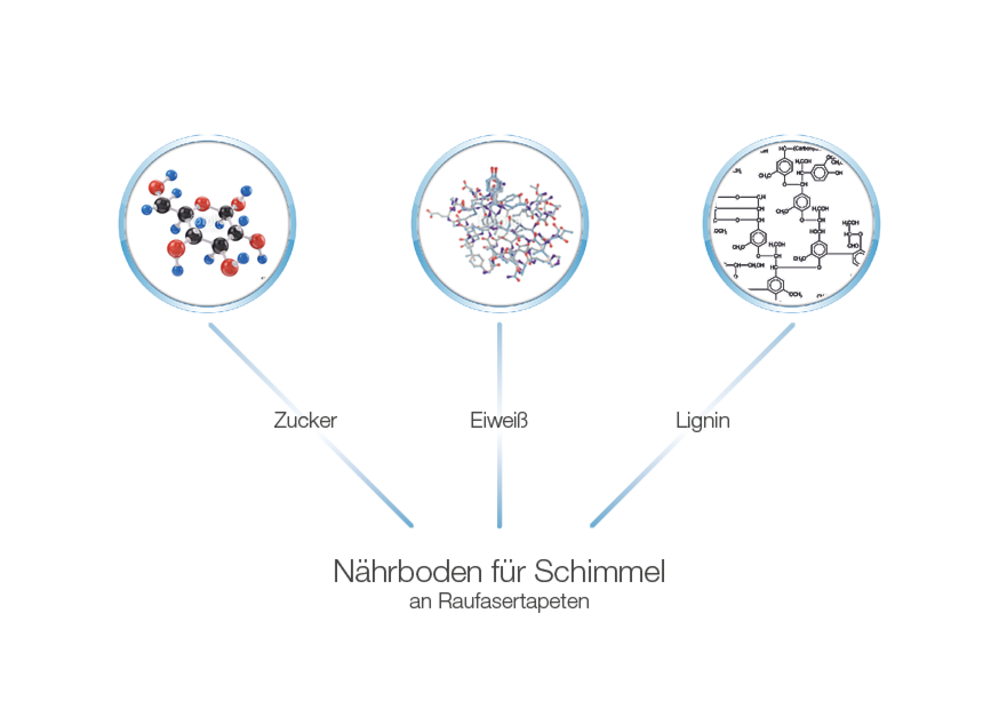
There are surfaces on which mold can develop particularly well. Woodchip wallpapers, for example, offer ideal feeding conditions for mold. Their relatively high sugar, protein and lignin content is a real nutrient cocktail for mold. Gypsum-based substrates and wood paneling also ensure an abundant supply of nutrients. Make sure there is sufficient air circulation so that no mold can develop on the walls.
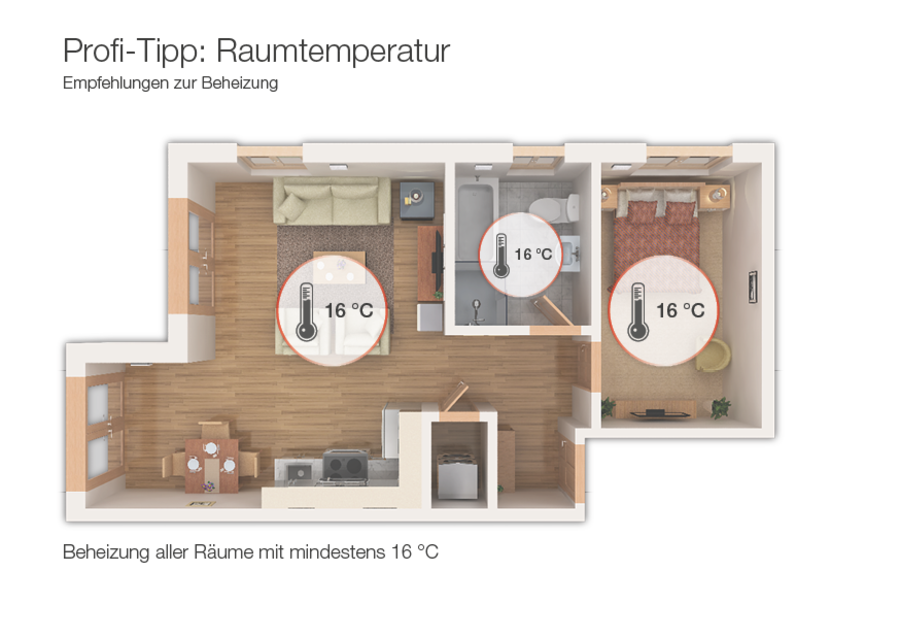
In combination with inadequate ventilation and medium to high levels of moisture emitted by the air you breathe and the moisture of the residents’ skin at night or when the clothes are dry, the unheated bedroom is particularly prone to mold.
There are surfaces on which mold can develop particularly well. Woodchip wallpapers, for example, offer ideal feeding conditions for mold. Their relatively high sugar, protein and lignin content is a real nutrient cocktail for mold. Gypsum-based substrates and wood paneling also ensure an abundant supply of nutrients. Make sure there is sufficient air circulation so that no mold can develop on the walls.
Damp walls in the basement are not uncommon, especially in old buildings. In principle, the moisture can arise indirectly through condensation water or directly through water penetrating from the outside.
Condensation occurs due to incorrect ventilation: the cellar walls rarely reach temperatures above 12 ° C. Since the air humidity can only be transported from warm to cold, basement rooms should only be ventilated when the temperatures outside the house are lower than in the basement rooms themselves. In our latitudes this usually means that ventilation is between October and March and the windows should be closed between April and September.
If water can penetrate the cellar, structural renovations are necessary. It should therefore be sealed against water from the outside and provided with drainage. Waterproof paints should never be applied indoors.
Correct ventilation – mold in the basement – mold in the apartment – mold causes
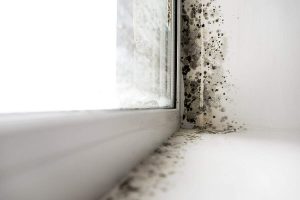
Conclusion - causes and formation of mold
In many cases of mold in the living room, damp walls or corners are caused by temperature differences in the apartment. Thermal bridges, cold outside walls and unheated rooms are a problem, especially in winter, which can quickly lead to mold on walls. If there is insufficient heating and ventilation, the problem is exacerbated.


